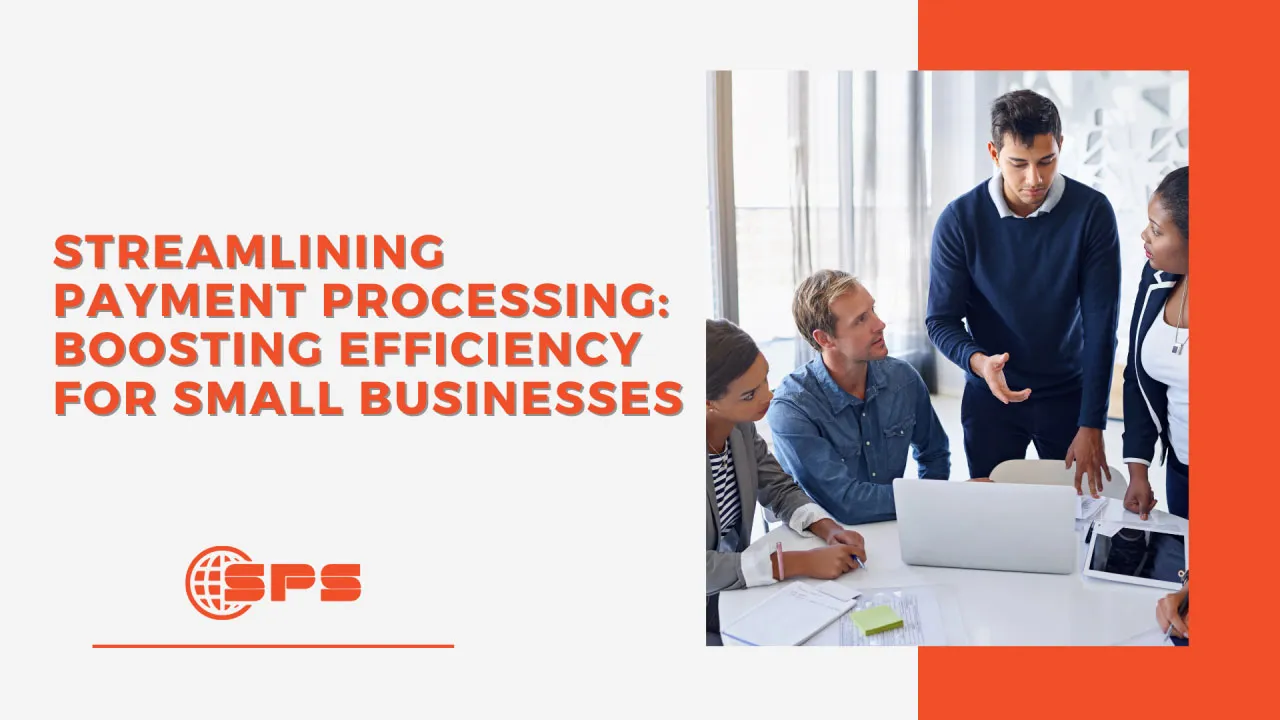Streamlining Payment Processing: Boosting Efficiency for Small Businesses
Small business owners are always on the lookout for ways to reduce costs, increase efficiency, and optimize operations. One critical area that often goes overlooked is payment processing. While it may seem like just another administrative task, optimizing your payment processing system can lead to significant savings and smoother operations.
In this article, we’ll explore practical ways to streamline your payment processing system, cut unnecessary costs, and avoid hidden fees—helping you run a more efficient and profitable business.
1. Understand Your Current Payment Structure
The first step to optimizing your payment processing system is to fully understand the fees and processes involved in each transaction. Payment processors typically charge businesses a combination of fixed fees (such as monthly maintenance fees) and variable fees (such as interchange fees or transaction fees based on card type). For small businesses, these costs can add up quickly.
Action Tip: Start by reviewing your payment statements and contracts with your current processor. Break down the fees to understand exactly what you’re paying for. Knowing where your money is going is the key to finding cost-saving opportunities.
2. Switch to Transparent Pricing Models
One of the most common challenges for small businesses is the lack of transparency in payment processing fees. Many providers bundle fees together, making it difficult to pinpoint exactly what portion is going toward interchange fees, processor markups, and other charges. Switching to interchange-plus pricing can solve this problem. This model clearly separates the interchange fee from the processor’s markup, giving you a more transparent view of your expenses.
Benefits of Interchange-Plus Pricing:
- Transparency: You know exactly what you’re being charged for.
- Cost Savings: Separating interchange fees from the processor’s markup allows you to negotiate better rates.
Action Tip: Ask your payment processor to provide a detailed breakdown of all the fees they charge. If you notice bundled pricing, consider switching to a provider that offers transparent, interchange-plus pricing.
3. Use Technology to Automate Payment Processing
The manual processing of payments can be time-consuming and prone to errors. Leveraging technology can simplify the process, reduce administrative burdens, and ensure accuracy in each transaction. Look for payment processors that offer automated tools, such as integrated payment gateways, virtual terminals, and cloud-based invoicing systems.
Benefits of Automation:
- Reduced Errors: Automated systems reduce the chance of human error in recording transactions.
- Increased Efficiency: Automated payment gateways streamline the entire process, freeing up time for other tasks.
Action Tip: Invest in a payment processing solution that integrates with your accounting software, ensuring seamless data transfer and reducing manual entry errors.
4. Minimize Card-Not-Present Transactions
Card-not-present (CNP) transactions, such as those processed online or over the phone, typically incur higher fees than card-present transactions. For small businesses that rely heavily on CNP transactions, this can quickly drive up processing costs. Whenever possible, encourage customers to use card-present methods, such as tap-to-pay or chip-insert transactions, to reduce fees.
Action Tip: If you operate a physical store, consider promoting contactless payment options that still qualify as card-present transactions, while also offering convenience to your customers.
5. Regularly Review Your Payment Statements
Many businesses overlook the importance of regularly reviewing their payment processing statements. Hidden fees and rate increases can slip into your monthly charges without notice. By consistently monitoring your statements, you can identify discrepancies and negotiate lower rates.
Action Tip: Make it a habit to review your monthly statements for any unexpected fees. If something looks off, don’t hesitate to contact your processor to clarify or negotiate.
6. Partner with the Right Payment Processor
Choosing the right payment processor is critical to optimizing your system. A reliable processor should offer transparent pricing, robust customer support, and a variety of payment options to meet the needs of your business. Additionally, they should provide advanced security features to protect your business from fraud and data breaches.
Stellar Payment Systems: Your Trusted Partner
At Stellar Payment Systems, we understand the challenges small businesses face when dealing with payment processing. That’s why we offer transparent, interchange-plus pricing with no hidden fees. Our advanced tools—such as virtual terminals, automated gateways, and integrated reporting systems—help you streamline your payment processes, saving both time and money.
Let Stellar Payment Systems help you take control of your payment processing and optimize your business for success. With our commitment to transparency, efficiency, and security, you can focus on growing your business without worrying about unnecessary fees.
By following these steps, small businesses can significantly reduce costs and optimize their payment processing systems. Partnering with the right provider, like Stellar Payment Systems, can make all the difference in how efficiently and profitably your business operates.

